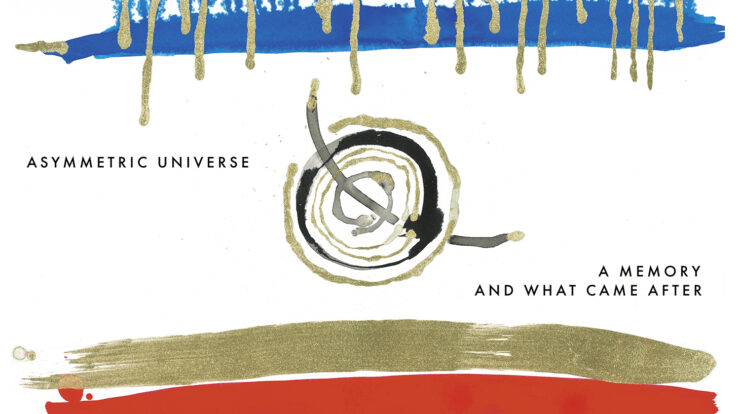
This post was originally published on this site
Jazz fusion first emerged in the late 1960s and early 1970s, as a generation of jazz musicians began to plug their guitars into distorted amps, and rock and prog musicians started to incorporate harmonic complexity and improvisation. A half-century later, the term seems anachronistic, as complex musical traits are commonplace in the likes of progressive metal and heaviness finds its way into jazz via other means. Keen to bring their own sonic blend of genres are ASYMMETRIC UNIVERSE, formed of Italian brothers Federico and Nicolò Vese. Their second album and major label debut, A Memory And What Came After, revisits fusion anew, a prog metal base infused with modern jazz ideas.
This is evident from the first minute of opener and single Coquelicot. The track begins with busy riffwork, the rapid-fire palm mutes and fretboard runs of Federico Vese supported by pounding drums, but also overlayed with jazzy piano chords from brother Nicolò. Another classic jazz touch sees the saxophone from Simone Garino double the more melodic guitar lines. A brief foray into down-tuned breakdowns evolves into a clever guest solo from HAKEN guitarist Richard Henshall.
The range of influences on A Memory And What Came After is broad, but the djent sound is its most pervasive – particularly the thumping styles of ANIMALS AS LEADERS. There’s a frenetic, percussive feel to the guitar riffs in Fair Enough, hammering away at rapid speed and spiked with proggy, clean guitar stabs. The melodic runs and solos owe much to the pioneering work of ALLAN HOLDSWORTH in their speed and chromaticism. The entire track is unrelenting, both in its heaviness and complexity, all twisty harmonics and time signatures. The intensity doesn’t let up – Don’t Go Too Early is even faster, and like much of the album, incredibly busy. As many notes as possible played on multiple instruments, changing pace and style every 30 seconds over seven minutes, escalating the technical runs and chords with increasingly large numerical modifiers against them: it’s striving for jazz odyssey.
The technical wizardry on show here is unquestionable. Federico Vese‘s guitar work is as creative as it is virtuosic, rarely willing to sit in one lane or style even within a given passage, let alone across a track. The lower-register riffage also brings a gnarly intensity, particularly in the assault that is the first half of Reaction – Overthrow. The song at first threatens to devolve into what feels like a series of YouTube-ready guitar exercises. But it successfully finds an emotional gear in its back half, a languid cello line tying together the frenetic drums and guitar. Longtime SUNGAZER collaborator Jared Yee delivers a delightfully tasteful saxophone solo to close the high point of the album. The contemplative Recovery – Thirst For Stars offers a much-needed respite with sparse piano and strings, slowing the pace of an album that often rushes at breakneck speed.
Recent single Feather On A Glass returns to the patterns of the earlier songs – more down-tuned djent-y bends and rapid-fire percussive picking, augmented by some harmonically sinister synths. It sets itself slightly apart through its chorus, a PLINI-esque affair led by a cheesy sing-along melodic riff. More interesting and challenging is follow-up Dancing Through Contradictions. Every instrument seems to be running to a different polyrhythm and time signature, united by an off-kilter staccato feel and chromaticism. It’s the most technical jazz part of the album, with shades of the jazz metal of PANZERBALLETT, and requires work to enjoy – though a bass solo from Nicolò Vese is nothing short of sublime.
The last couple of tracks slightly dial down the distorted guitar effects. Opaco opens with the sort of busy, clean, and natural harmonic-inflected style seen from POLYPHIA, and in doing so, gives its harmonically complex progressions room to breathe. The album closer Those Who Stay seeks a brighter tone, leaning more on peaceful piano chords and string flutters. The most successful moments of A Memory And What Came After are where the songs find an anchor to work around, and its closing piano chord passages do just this, enabling the virtuosity of the saxophone and guitar work to augment the emotion of the song rather than swamp it.
ASYMMETRIC UNIVERSE are not rewriting the rules of progressive metal or jazz fusion. The talent on offer is sensational and worthy of virtuosic rhapsody, but it doesn’t have the technical originality of ANIMALS AS LEADERS, POLYPHIA, or TIGRAN HAMASYAN. What A Memory And What Came After offers is a chameleonic ability to take those techniques and ideas and express them in their own way, with flair, style, and in its best moments, pathos.
Rating: 7/10

A Memory And What Came After is out now via InsideOut Music.
Like ASYMMETRIC UNIVERSE on Facebook.
The post ALBUM REVIEW: A Memory And What Came After – Asymmetric Universe appeared first on Distorted Sound Magazine.




